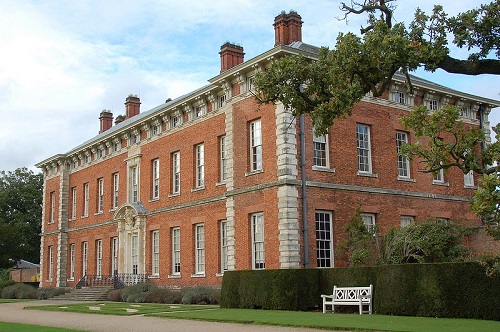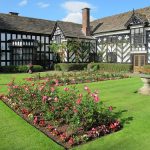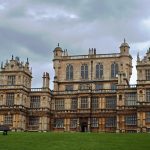Beningbrough Hall, Yorkshire
This stunning Georgian mansion is what most people picture when they think of a traditional English stately home. The home was constructed in 1716, but the identity of its architect remains a mystery to this day. It is a perfect example of the style of construction that was dominant at the time, with huge red brick walls and large picture windows. Much of the interior of the hall is in the Baroque style, with ornate wood carvings and central corridors that run the length of the home. It is also famous for its cantilevered staircases that lead to its residential areas.

The hall today is home to over 100 works of art that are on loan from the National Portrait Gallery, and the large rooms and hall of the Beningbrough are an art exhibit that operates all year round.
The History of Beningbrough Hall
Like many large halls, homes, and mansions in England, Beningbrough Hall has a rich and interesting history and has played a part in the development and evolution of England and of Great Britain.
In the hall’s first 200 years, it saw many changes of ownership and a period of neglect. At the turn of the twentieth century, many feared it would have to be demolished as it had fallen into such a poor state and was in need of many structural repairs. Fortunately, the home was bought by the Countess of Chesterfield, Enid Scudamore-Stanhope, in 1916. She immediately began a full and complete restoration of Beningbrough Hall and its surrounding gardens and filled it with works of art and furnishings from her other stately home, Holme Lacey in Herefordshire.
During the Second World War, Beningbrough Hall was utilised by the Royal Air Force, and later the Royal Canadian Air Force, as a command post for bombing squadrons. This was where some of the daring and dangerous bombing runs over occupied France and Nazi Germany were planned.
After the war, in the late 1950s, ownership of Beningbrough Hall was passed to the National Trust and they have maintained the property and used it to house works of art from the National Portrait Gallery and other notable exhibitions over the decades.
What to See and Do at Beningbrough Hall
The biggest attraction at Beningbrough Hall is arguably its collection of art. Though the National Portrait Gallery has an exhibition on permanent display, many other artists and artworks are also displayed in the huge room and long hallways of the hall.
The interior of Beningbrough Hall is a work of art itself, with some astounding wood carvings and decor on display. There are also sculptures, prints, and even dances performed at the hall throughout the year.
Beningbrough Hall is great for families too, with lots of activities in the grounds surrounding the great hall to keep younger visitors occupied and trails to follow to help young minds discover the wonders of history and art. There is also a wide range of refreshments and food available from the garden restaurant, the brewhouse next to the play area, and the stable shop. Beningbrough Hall is a fantastic day out for all the family.



